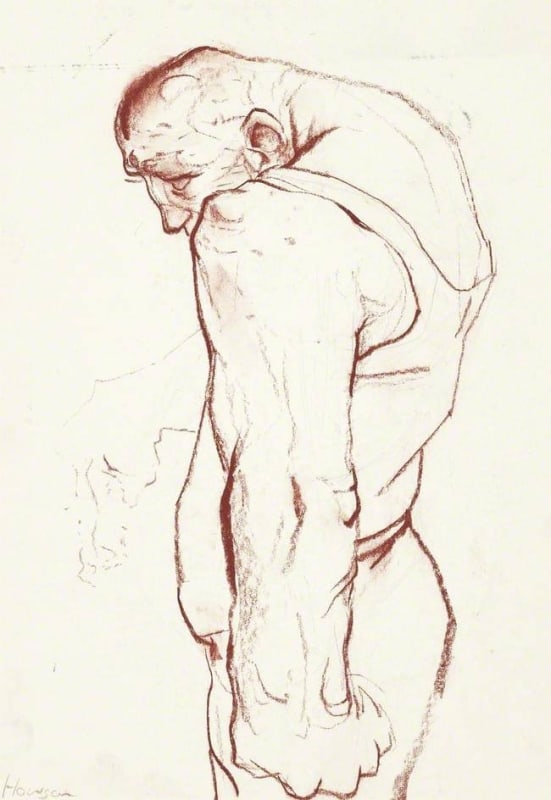A Brush with Evil showcases contemporary Scottish artist Peter Howson's devastating painting, Holocaust Crowd Scene II (2011), acquired for the Ben Uri Collection in 2020, a visceral and haunting representation of the horror and brutality of the Nazi concentration camps.
The display explores the painting’s central themes of violence and suffering, masculinity and brutality, its art historical influences in the works of the Old Masters, Renaissance artists and German Expressionism, and its references to classical and Christian imagery, against the backdrop of Howson’s life and career. Comparisons are drawn with two other key works in the Ben Uri Collection: George Grosz’s Interrogation (1938) and Clare Winsten’s Attack (c. 1910).
Also on display in the lower gallery and library are works addressing war, conflict and suffering by other artists who found their inspiration in the same sources as Howson, including those who looked to religious imagery, such as Natan Dvir and Emmanuel Levy, and those who, like Howson, had a longstanding interest in the work of Francisco Goya, including Josef Herman and Leo Haas. Others, such as Jacob Pins and Jona Mach, looked to German Expressionism, or to previous representations of war and conflict, as in the case of Dorothy Bohm. Alongside these are prints by two important influences on Howson: Albrecht Dürer and Rembrandt.
The consequences of war meanwhile are further addressed by the refugees depicted by Herman, Eva Frankfurther, Orovida, and in the film Break by Edwin Mingard, in a supporting display to mark Refugee Week (19-25 June).
We extend huge thanks to the artist Peter Howson and his studio assistant Stan Bethwaite, to Matthew Flowers and Isabel Bingley at Flowers Gallery, and to the Ben Uri team who have helped to make the exhibition possible, particularly Clare Matthews, with the assistance of Verity Laycock, Ashwag Alharbari, Maya Katznelson and Eliza Neill.

















